University of Redlands Emergency Alert System
Alert Received: . For more information, visit: https://www.redlands.edu/alert/
University of Redlands
- Home
- Trees
- Species Accounts
- Saucer Magnolia
Common Name: Saucer Magnolia; Chinese Magnolia
Scientific Name: Magnolia x soulangiana
Family: Magnoliaceae
Identification
Habit: The Saucer Magnolia is a hybrid plant, derived from the Yulan Magnolia (Magnolia denudata) and the Lily Magnolia (Magnolia liliiflora). It is a multi-stemmed tree that can grow up to 25 feet (7.62 meters). At maturity, it has a large spread of 20-30 feet (6.10-9.14 meters).2 The initial growth rate of the tree is relatively rapid but begins to slow down substantially as the tree reaches about 20-years of age, which is when the tree is beginning to reach maturity. Less mature trees are distinctly upright and oval; they begin to round by 10-years of age.2 The crown density of the tree is open and uneven, forming an irregular outline
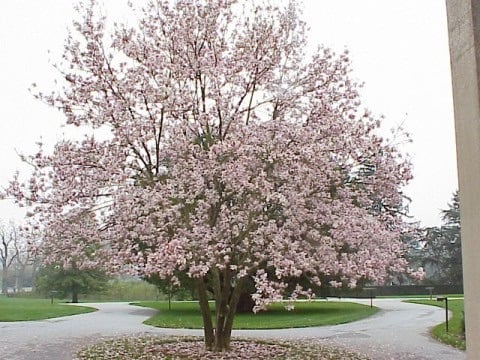 Figure 1: Mature Saucer Magnolia
Figure 1: Mature Saucer Magnolia
Leaves: The simple and deciduous leaves of the Saucer Magnolia are a dark green color in the summer with a smooth, leathery texture, but turn into a bronze, gold color during the fall. When the leaves are young, they are small, thin, and bright green before eventually darkening as they mature. 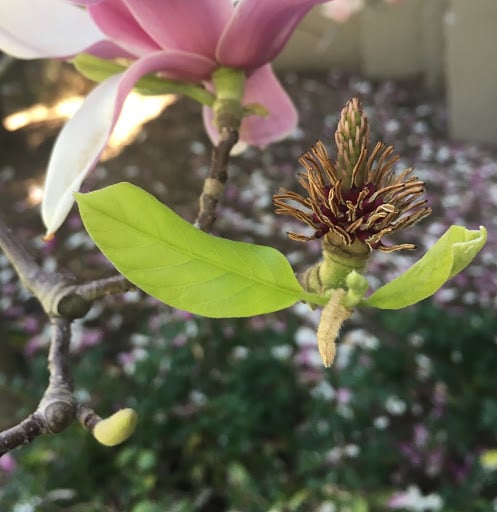 Figure 2: Young Leaf
Figure 2: Young Leaf
They measure to be four to eight inches (10.14-20.32 cm) in length, and two to four inches (5.08-10.14 cm) wide.2 The oval leaves are pinnately (alternately) arranged, with smooth margins, pointed tips, and a tapered base. They grow from the twigs on the branches with a coating of pubescence (fine, short hairs).5 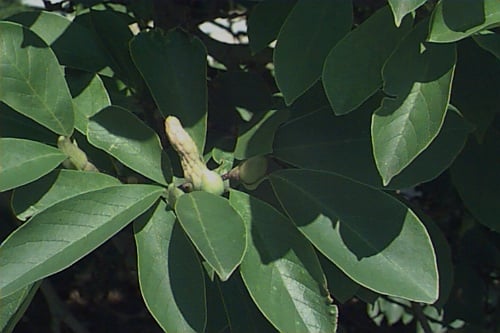 Figure 3: Foliage
Figure 3: Foliage
Twigs & Bark: When mature, the Saucer Magnolia features a relatively smooth, light grey colored bark (Figure 4: Bark).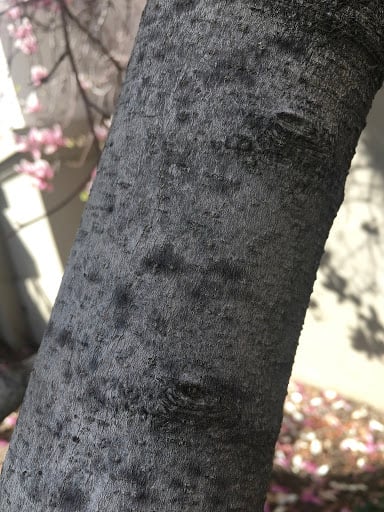 There are often multiple trunks, or the main branches remain fairly low on the main trunk.
There are often multiple trunks, or the main branches remain fairly low on the main trunk. 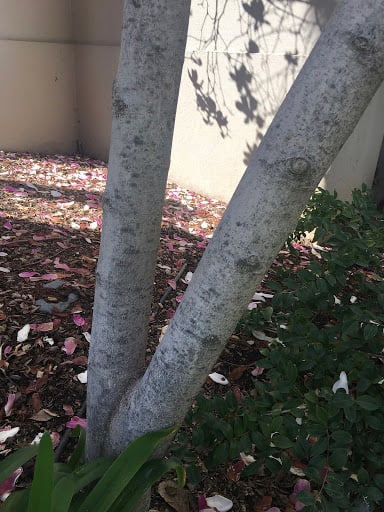 Figure 5: Trunk5
Figure 5: Trunk5
The bark is thin, leaving it prone to damage. As the tree grows, the weight of the long, thin, twig-like branches begins to droop downward. This creates a spreading, low canopy. Although the bark of the tree is thin, the branches are durable and flexible, so they are resistant to breakage.6
Flowers & Fruits: The Saucer Magnolia produces exquisite, ornate flowers that resemble a goblet or saucer (hence the common name) and is composed of six waxy petals.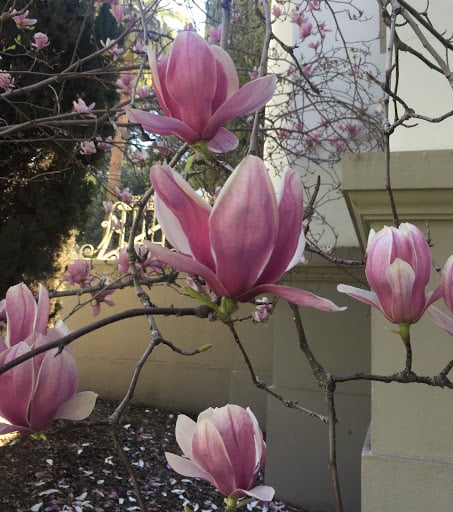 Figure 6: Flower in Bloom.
Figure 6: Flower in Bloom.
Larger green buds form at the tips of the branches during the winter, measuring about 1.0 inch (2.0 cm) long.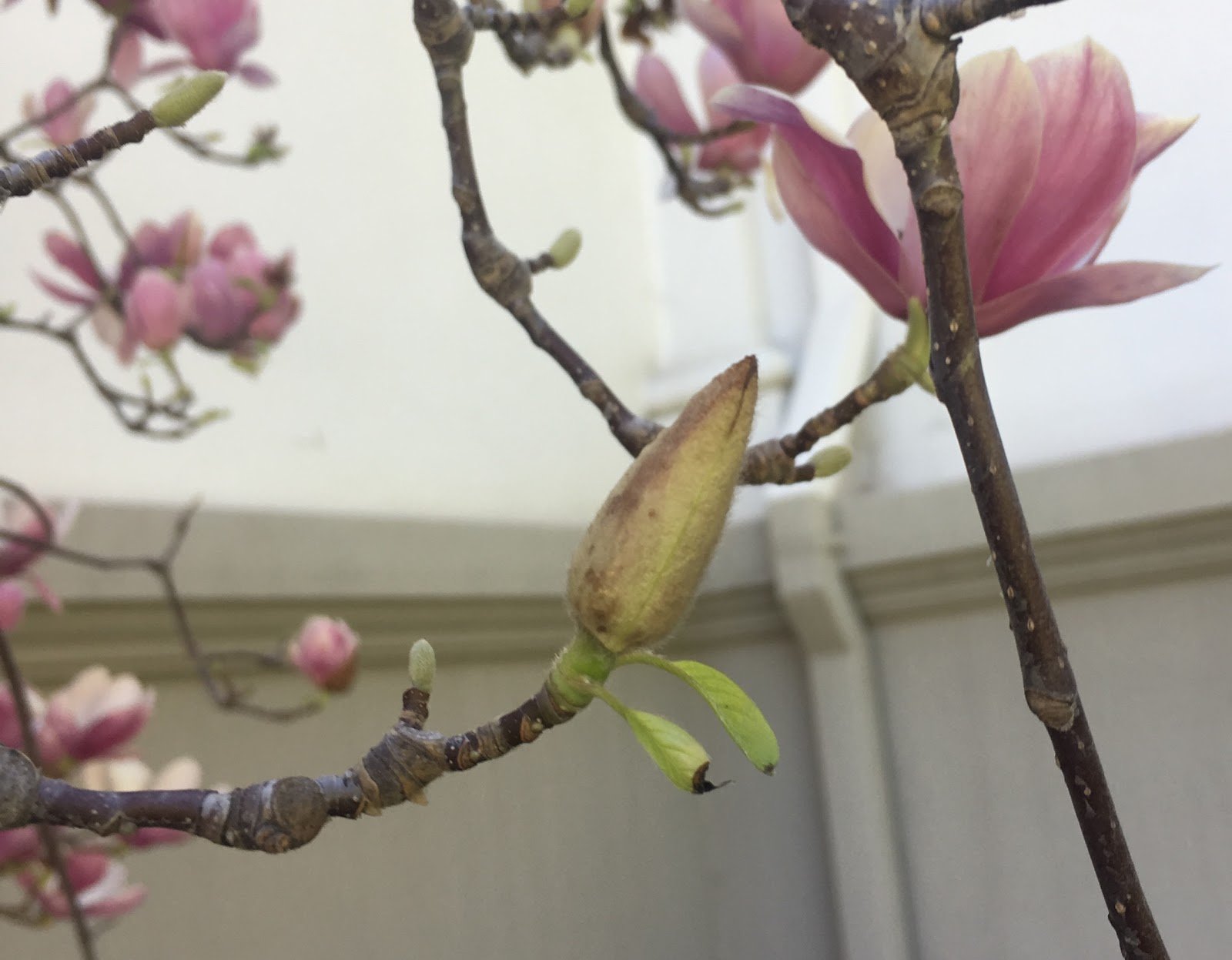 Figure 7: Flower Bud6
Figure 7: Flower Bud6
The buds first form the seed-bearing cone that is evident in fully bloomed flowers, with the stamen and pistils arranged around the central cone.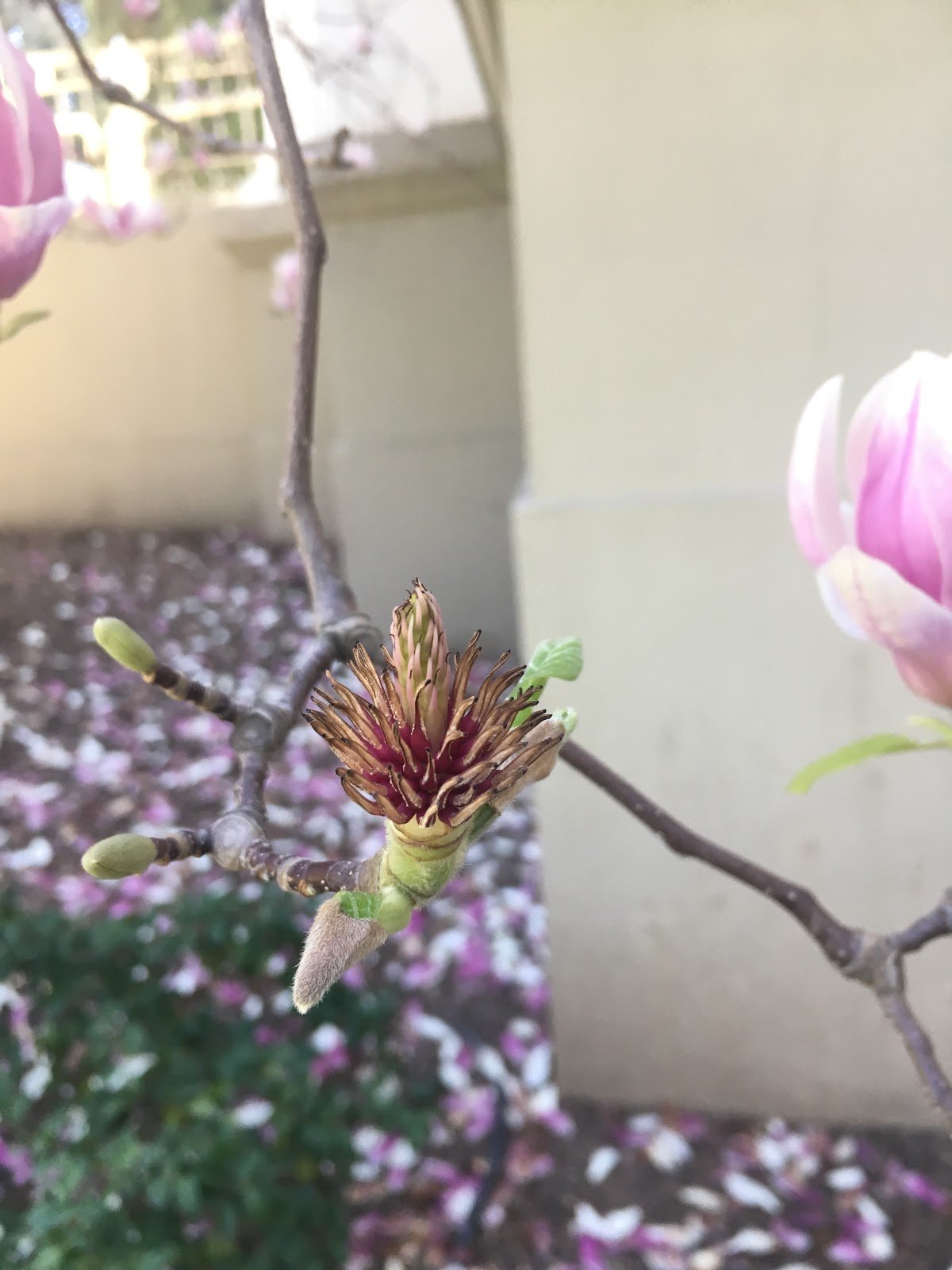 Figure 8: Seed-bearing Cone Forming from Bud
Figure 8: Seed-bearing Cone Forming from Bud
The buds then turn into small, closed, dark pink flowers.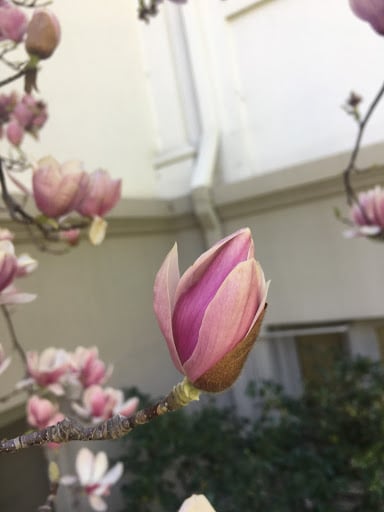 Figure 9: Young Flower
Figure 9: Young Flower
Eventually, the buds blossom in late February to April, producing large white flowers, blended with a deep pink color emerging from the exterior and base of the petals. The flowers typically measure 3.0 to 6.0 inches (7.6-15.2 cm) in diameter.6 Due to the arrangement of the stamen and pistils around the seed-bearing cone, it is difficult to distinguish the variation between the Saucer Magnolia's petals and sepals, therefore they are occasionally referred to as tepals.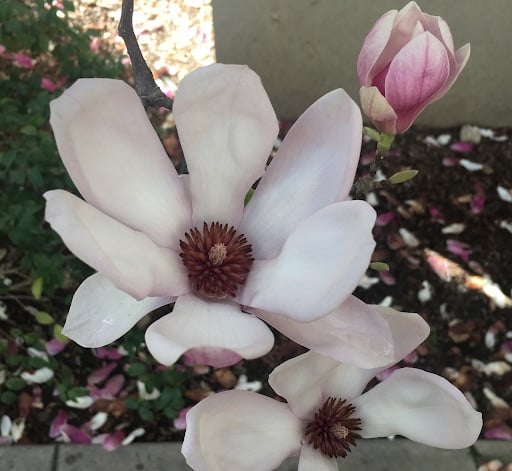 Figure 10: Tepals1
Figure 10: Tepals1
Between August and September, the tree yields elongated fruit that emerges from the slits of its branches. The small, inconspicuous fruits are pointed, and either pink or red in color with a hard, dry, and sometimes knobby exterior.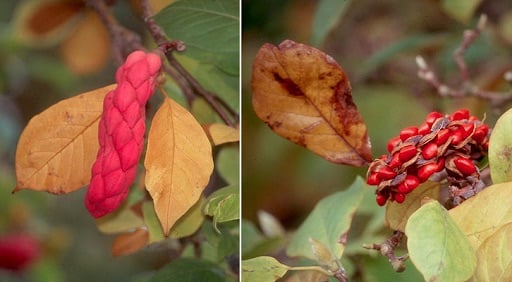 Figure 11: Fruit
Figure 11: Fruit
Despite the dense exterior, birds are allured by the fruit.
Where it’s from
Native range: During the early 1820s in Fromont, France, the Magnolia x Soulangiana was created by hybridizing Yulan Magnolia (Magnolia denudata) and Lily Magnolia (Magnolia liliiflora), both of which originate from various parts of China.3 The hybrid quickly entered cultivation in England and other parts of Europe, as well as North America. The Saucer Magnolia prefers rich soil with organic matter and is capable of growing in acidic, moist, sandy, clay, and well-drained soils.3 The tree requires consistent sun exposure, and moisture in order to flourish. The tree exhibits some drought resistance and is relatively tolerant to wind and alkaline soils.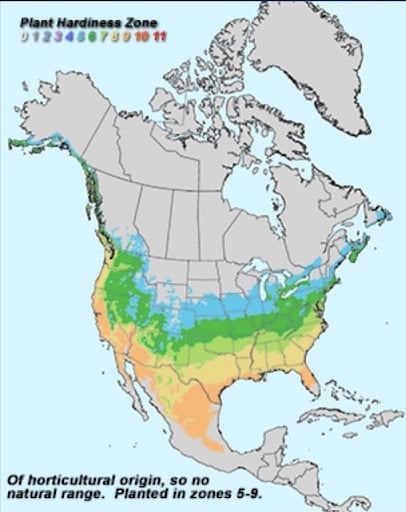 Figure 12: Map of Suitable Habit in the U.S.3
Figure 12: Map of Suitable Habit in the U.S.3
Ecological notes: Many squirrels and birds use the tree as a nesting site, as well as consuming the seeds of the tree.3 The sprouts and bark of young trees are browsed by rabbits and deer. Additionally, leafminers are occasionally attracted to the Saucer Magnolia and occur most frequently in the southern United States.2 They tend to gnaw on leaves and flowers, stunting new growth. The aroma of the plant’s flowers attracts a multitude of beetles, primarily Japanese beetles, that feed on the rich pollen buried within the flowers.
The Saucer Magnolia is afflicted by several diseases and is subjected to various leaf spots that are caused by bacterial and fungal infections.2 The tree can be infected a fungal disease known as powdery mildew, which causes blisters to form on developing leaves.3 Infected leaves become laden with a white-grey powdery growth; if severely infected the leaves will often grow brown and drop prematurely. Wood rot is another fungal disease that affects the tree; it invades the plant through scars and wounds.3 The fungal disease can be recognized by the formation of fruiting fungal bodies that appear on the trunks of infected plants. Fungi inhibit branch growth, causing the infected bark to slough off. Cankers form as a result of these infections and can cause significant dieback.2 Enlarged cankers can distort the plant and its elegant appearance. Prevention of canker formation can be facilitated through consistent fertilization and watering during extended periods of drought. The Saucer Magnolia can also be afflicted by the root diseases Phytophthora, which causes the roots to rot and inhibits the plant’s ability to absorb the necessary nutrients and water it needs to flourish.3 In addition, the tree is susceptible to verticillium wilt, which can kill its branches.3 If the disease becomes pervasive, it can culminate in plant mortality.
What we use it for: Due to the tree’s distinctive dark green foliage, and astonishing floral display, the Saucer Magnolia is often selected for planting in landscape settings; it adds beauty and variety to mixed shrub borders and makes for magnificent shade.6 In addition, the tree can be trained as an espaliered plant, where it grows against a flat wall or fence. The wood of the Saucer Magnolia can also be used to construct furniture or in paper production.3
References:
Images:
Biographers: Maggie Eshmawy ‘21 & Isabella Ulibarri ‘21, BIOL 238: Evolution, Ecology, & Behavior, Fall 2019